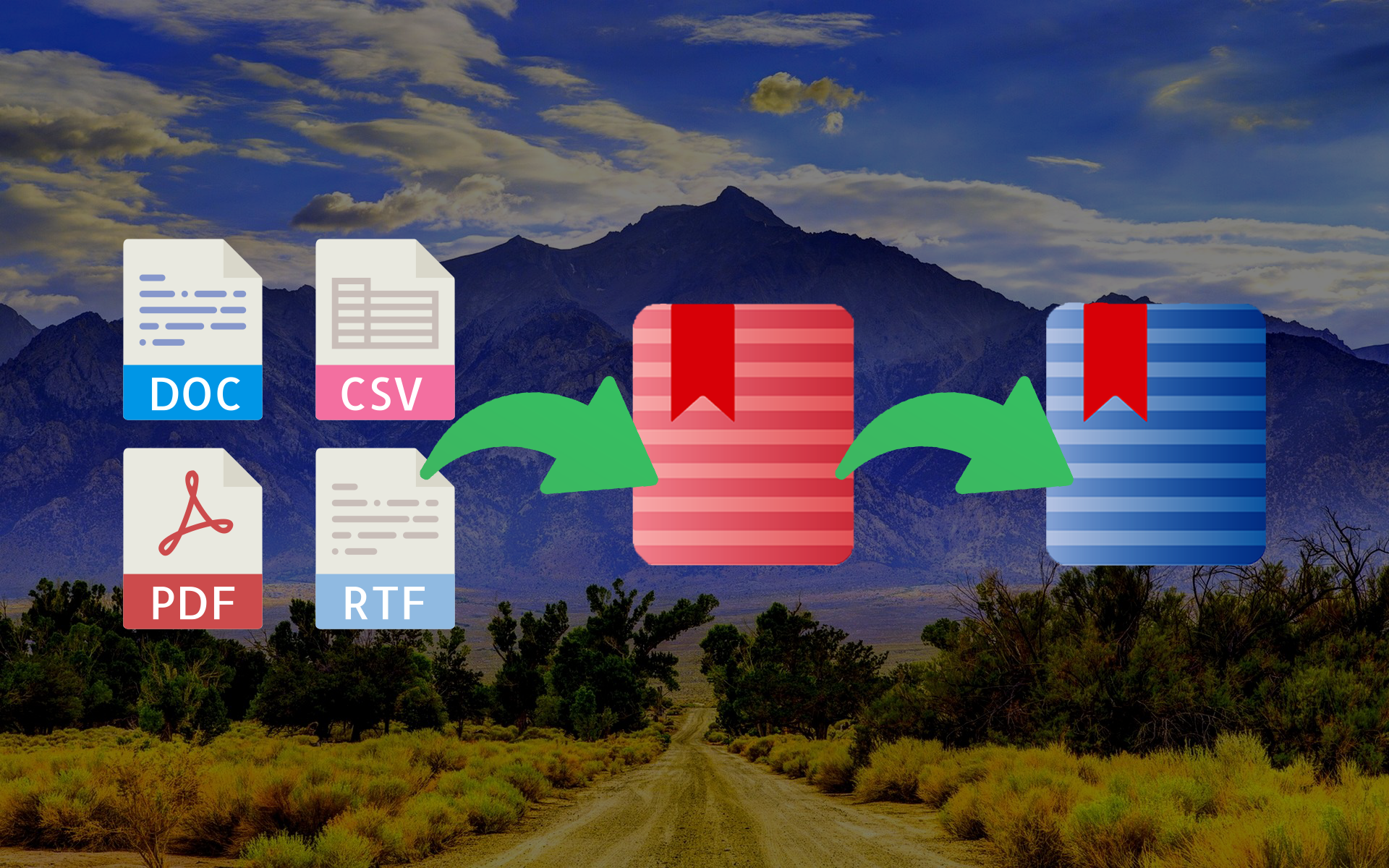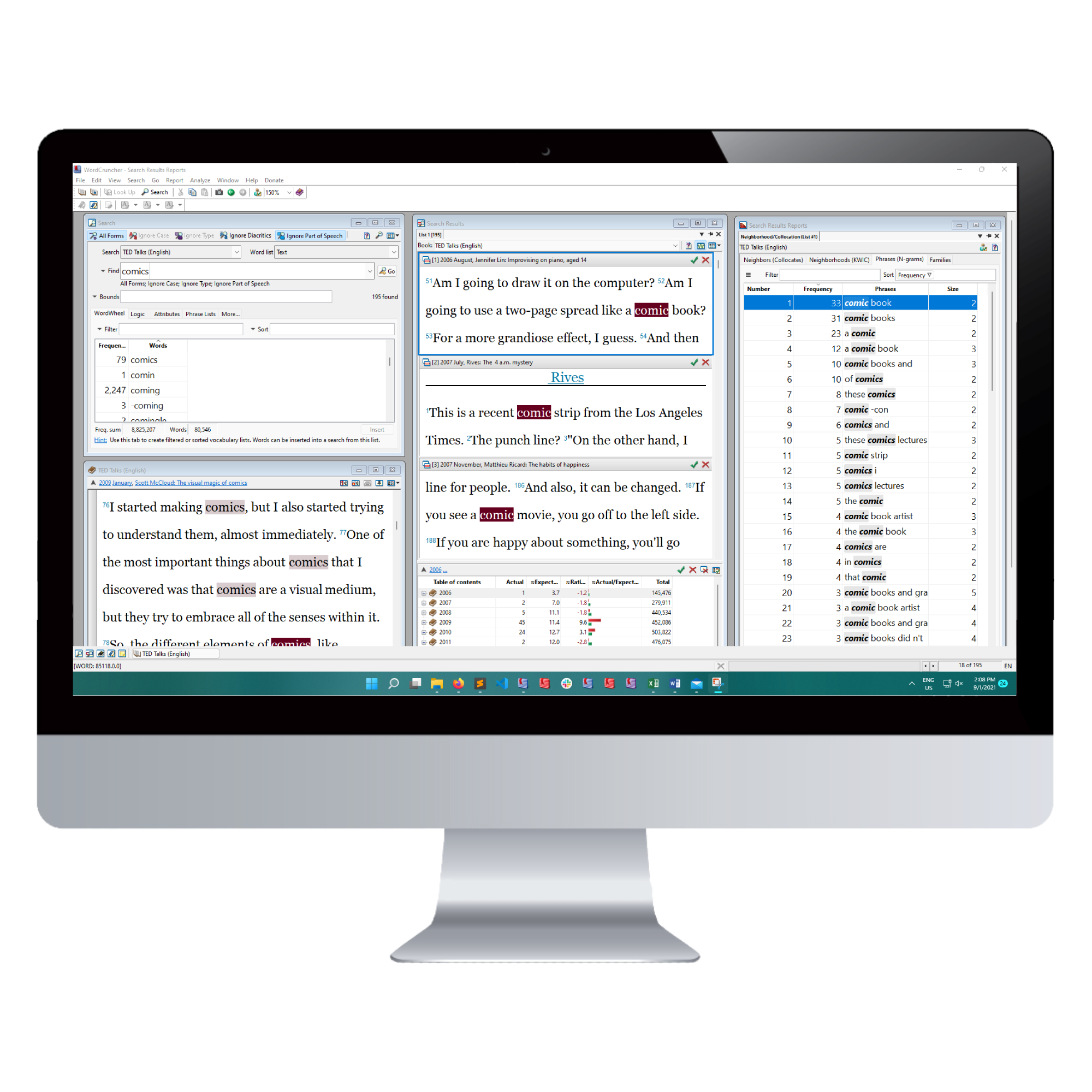Getting Started
What is WordCruncher?
WordCruncher is a desktop application that offers a wide variety of tools for searching, studying, and analyzing texts.
Whether you're a student, professor, or an avid reader, there are tools available to improve your experience with texts.
This page will introduce some of the basic tools you are looking for. Scroll down to learn how you can get started with the most common tools.
Once you master these tools, you can continue to explore different ways WordCruncher can help you get the most out of texts.
For tips and tricks to discover new insights, you can also subscribe to WordCruncher Monthly.
Install WordCruncher
Download a Book
File > WordCruncher Bookstore…- Choose a collection (WordCruncher Library or Gospel Library)
- Click
FREEnext to the name of a book - Click
Install
Try It Out
Why not explore the WordCruncher library? Click here to browse books!
Open a Book
File > Open Book- In the left panel, navigate through the bookshelves to locate a book
- In the right panel, select the book by clicking on it
- Click
Open
Study Tools
There are three highlighter icons ![]() in the toolbar to let you highlight text in
different colors.
in the toolbar to let you highlight text in
different colors.
- Click the down arrow next to the highlighter icon
- Select
Change Marker Color - Choose a color and click
OK - Select some text and then click on the highlighter icon
Try It Out
Create a note by clicking the ![]() icon.
icon.
Try It Out
- Create a note
- Add your text
- Save your changes
- Delete a note
Click the![]() icon to
create a bookmark.
icon to
create a bookmark.
Try It Out
- Add a bookmark
- Name the bookmark
- Update an existing bookmark
If you download a dictionary from the bookstore, you can look up definitions while you study.
Try It Out
- Click on a word
Book > Look Up This Word in Dictionary- Select a dictionary
Search Tools
WordCruncher has many search tools, but here are a few to start with:
While you're reading a book, you might be interested to see where a word is used in other parts of the book. Try double-clicking any word, and WordCruncher will show you a list of every time the word occurs.
Want to search for a specific word or phrase? You can either click on ![]() ,
, Ctrl+F, or press space.
Try it Out
Let's start with a basic keyword search.
- Open the search window
- Type in a search term
- Press
Go
An exact match search will look for words in the exact order you type them in.
Try it Out
- Use
"double quotes"around your search terms. - Try your search again, but without double quotes
A wildcard stands in place of one or more characters to expand your search results.
Try it Out
- Search with
*replacing letters at the beginning of a word. - Go to
Analyze > Search Results Reports > Search Vocabulary Reportto see a list of search results. - Search with
*replacing an entire word
Table of Contents bounds will limit your search within a certain section of your text.
Try it Out
Bounds > Table of Contents Bounds- Select chapters or sections
- Press
OK - Do a search
The WordWheel tab shows all words that occur in the selected word list and their frequency.
Sorting
When sorting the WordWheel by frequency, you can see what words occur most frequently.
- Click on the column header
Frequencyonce to see the most frequent words - Click on the column header
Frequencya second time to see the least frequent words
Filtering
When filtering the WordWheel by word type, you can limit the WordWheel to only display certain words.
For example, you can filter out punctuation:
- Click on the down arrow next to
Filter - Select
Word-type - Check the box
Normal text - Make sure that
All FormsandIgnore Typeare not selected
Analyze
WordCruncher offers several reports that will help you analyze your texts. Try these out:
The Search Vocabulary report is used to generate a WordWheel displaying the words you search and their frequency
This report is most useful when searching for a combination of a word and wildcard (*)
Try it Out
- Search
"* [word]" Analyze > Search Results Reports > Search Vocabulary
The report will display all results for any word that appears immediately before [word].
Neighbors (collocates) are words surrounding a search term.
Neighboring words, especially ones that occur commonly with your search term, can provide new insights in word usage by helping you find patterns.
Try it Out
- Do a search
- Click
Analyze > Search Results Reports > Neighborhood (Collocation) - Start in the
Neighbors (Collocates) - Click the
Neighborhoods (KWIC)
This will allow you to study the words that neighbor your search term.
This will allow you to analyze your neighbors in context of their sentences.
The Vocabulary Dispersion report displays the frequency of words in your text and indicates how equally distributed a word is.
In the Vocabulary dispersion data section, you will see a visual representation of the dispersion of each word.
Try it Out
- Click
Analyze > Book Reports > Vocabulary Dispersion Report - Take a look at the Vocabulary dispersion data section to find patterns in frequency and dispersion
The Phrase Compare Report compares recurring phrases in one or more texts based on n-grams.
An n-gram is a sequence of n items (words or symbols) from a given sequence of text or speech. For example, "I want to talk to you" is a phrase that is 6 n-grams long.
You can analyze the n-grams of one book, compare the n-grams between two sections of one book, or compare the n-grams between two books.
Try it Out
Compare the n-grams between different sections of one book.
- Click
Analyze > Book Reports > Phrase Compare (N-grams) - Select a book and search bounds.
- Select the max
Phrase length - In the
Phrasesmenu, select1 > 2 - Click
Compare
This example compares the n-grams of the 2020 TED talks to the TED talks from every other year in the corpus.
Add Your Own Text
Want a book, but it's not in the bookstore?
Have your own texts you'd like to use?
You can convert your text into a file compatible with WordCruncher.
All you need to do is use the WordCruncher Indexer.

